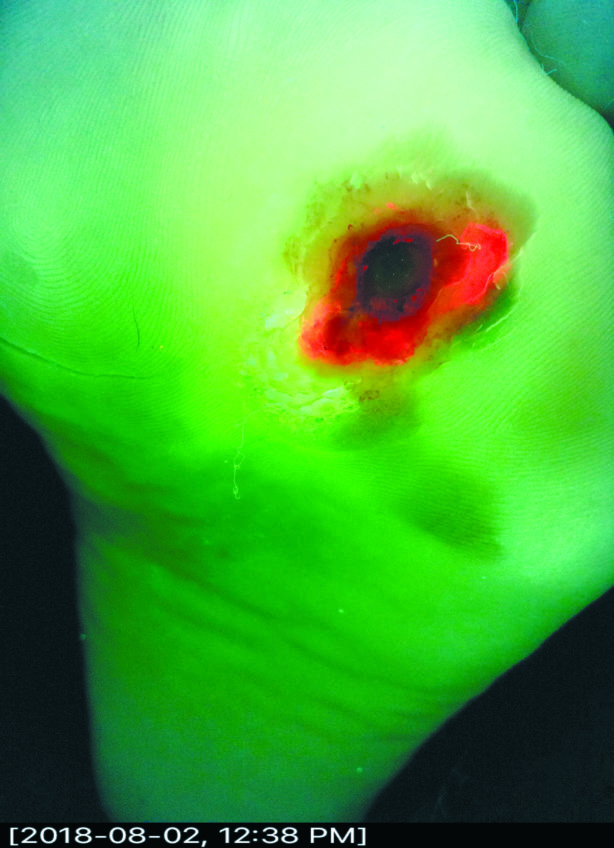
Fluorescence images can improve the diagnosis of infected wounds among patients who are asymptomatic, a new study has found.
Researchers examined 17 patients with venous leg ulcers and two with diabetic foot ulcers who had been clinically evaluated and prescribed a treatment plan for moderate-to-heavy bacterial loads. After the initial diagnosis, they received point-of-care bacterial fluorescence imaging that could be rapidly developed.
Fluorescence imaging makes bacteria easier to spot by highlighting it in a color that contrasts against healthy tissue. Previous research indicated it could help reduce the use of antibiotics.
The new clinical study by SerenaGroup Research Foundation found that, compared with clinical surveillance alone, a diagnostic approach with imaging improved sensitivity and accuracy. In 47% of cases, imaging identified wounds that had been incorrectly diagnosed by evaluation alone. In 73%, providers who saw the images modified a treatment plan to include image-guided cleaning; a new treatment selection; debridement or antimicrobial stewardship.
“Bacterial fluorescence may improve the diagnostic accuracy of identifying patients with wounds containing moderate-to-heavy bacterial loads and guide more timely and appropriate treatment decisions at the point-of-care,” the researchers reported in the Journal of Wound Care.
From the August 2019 Issue of McKnight's Long-Term Care News




